This is the seventh in a series of educational articles about heraldry for Calontir. (See bottom of page for links to previous articles.)
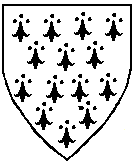
Previously, we discussed the basic ingredients for a coat of arms. Now how can we embellish those basic ingredients?
Furs.
Furs are treated like tinctures in most ways. The most common fur in heraldry is ermine. Plain ermine is black ermine tails on a white background, but versions can be done using all the heraldic tinctures.
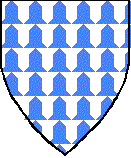 Vair is another fur, meant to mimic squirrel fur, and is traditionally blue and white, but can be done in other tinctures also. Furs obey the contrast rules, so you can have red ermined white, but not red ermined green.
Vair is another fur, meant to mimic squirrel fur, and is traditionally blue and white, but can be done in other tinctures also. Furs obey the contrast rules, so you can have red ermined white, but not red ermined green.
Lines of Division
The field (background) of a device, and many charges (motifs) can be divided into different-colored pieces. These pieces do NOT have to obey the contrast rules if they’re simple enough to be identifiable. (This because the color is considered “next to” the color, not “on” the color, i.e. you’ve divided layer 1 into different colored pieces, not placed a dark-colored layer 2 ON a dark-colored layer 1.)
Here are some options:
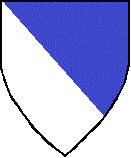
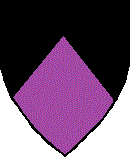
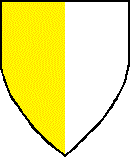

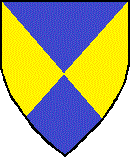
Complex Lines
The lines of the above divisions don’t have to be straight line, and these complex lines can also be applied to the edges of some simple geometric charges.
Here are some examples:









Diapering
In heraldry, diapering is adding tone-on-tone patterns to embellish an otherwise plain area of a device. For example, a plain blue background can be dressed up with light blue foliage swirls.
As you can see, even with all the rules in heraldry, there are millions of amazing options available. We’re happy to help if you can’t make up your mind. (See “Heraldic Helpers“.)
At your service,
Sofya la Rus, Habicht Herald
Calontir Heraldic Education Deputy
habicht@calontir.org
Previous articles in this series:
How do I create a coat of arms? Part one: inspiration.
How do I create a coat of arms? Part two, design principles.

You must be logged in to post a comment.